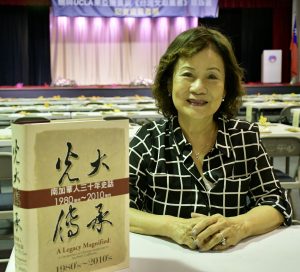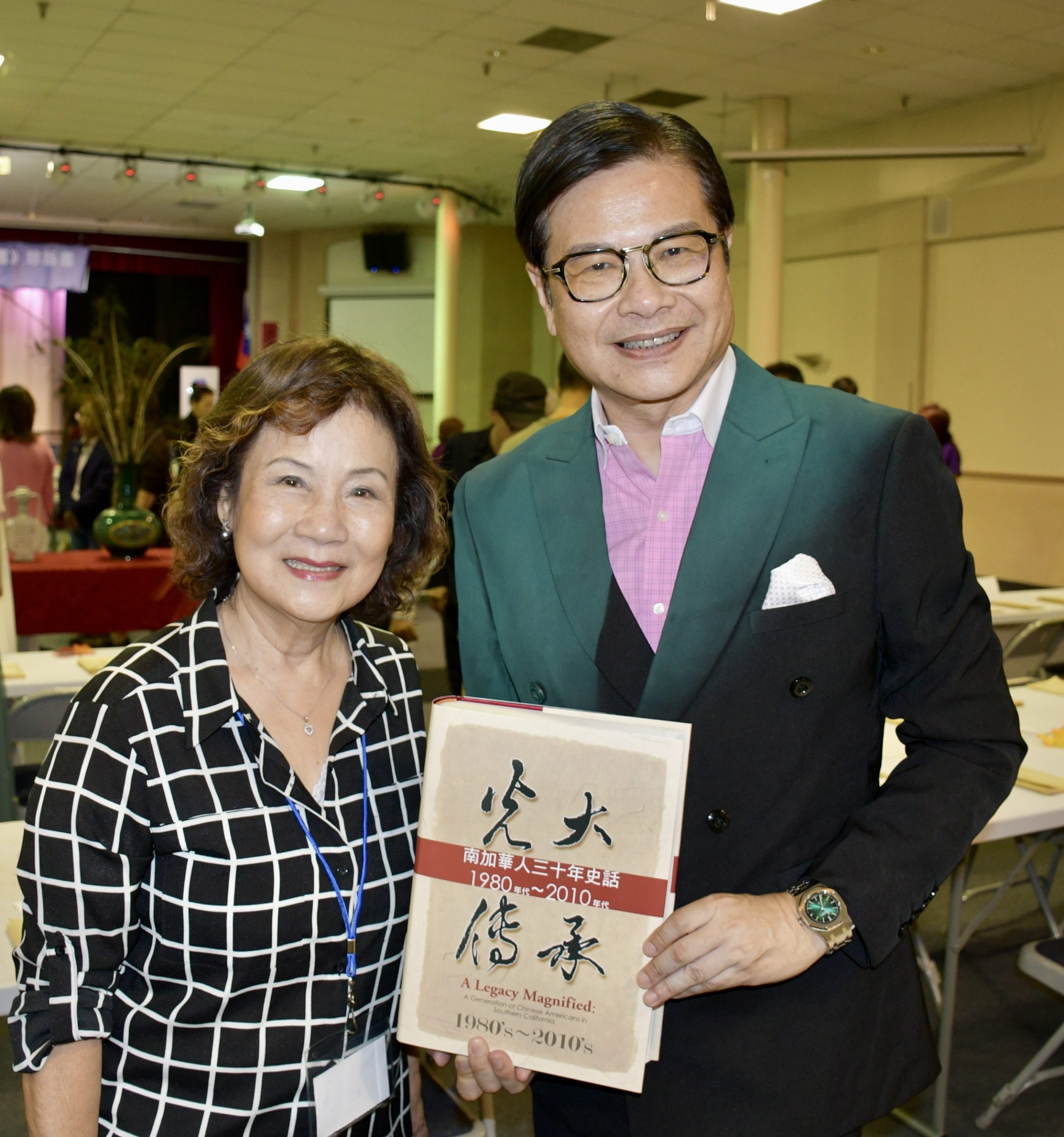From “L.A. Chinatown” to “Little Taipei”, and from “Little Taipei” to “Little Shanghai,” then from “Little Shanghai” to “China Valley” in the San Gabriel Valley, to the “New Taipei” or “Post-Modern Chinatown” in Irvine, Orange County, Chinese immigrants from China’s mainland, Taiwan, Hong Kong and other Asian countries have travelled a long way in Southern California and the whole United States.
However, no one had comprehensively traced the footsteps of the struggles of the Chinese Americans in the United States and especially in Southern California, regarded as one of the largest Chinese American populated areas in the country, till May Chen, a scholar turned journalist and educator immigrated to Southern California in the early 1980s from Taiwan, led a group of over 100 scholars, journalists, historians, educators, businessmen and women and other individuals to spend over four years to compile a book titled “A Legacy Magnified: A Generation of Chinese Americans in Southern California.”

“Following 1,460 days of toil and labor, an estimated 1,460 person-visits to the small meeting room of the American East Asian Culture and Education Foundation, and consuming over 1,460 boxes of bento, A Legacy Magnified: A Generation of Chinese Americans in Southern California, 1980’s-2010’s, containing over 900,000 Chinese characters, is finally available in print,” wrote May Chen in her Forward of her book.
Chinese were among the first settlers in Los Angeles. The 1870 census indicates that the population of Los Angeles was 5,728, among which 172 were Chinese. Those Chinese built their first “Chinatown” in Calle de los Negros, a section of Los Angeles Street today. Later they moved to what it is now Union Station, and again they moved to North Broadway and North Hill streets to be called “L.A. Chinatown.”
Chinese Americans in the United States is comprised of approximately 5.4 million individuals who were born in China’s mainland, Hong Kong, or Macao, or reported Chinese ancestry or race, according to MPI tabulation of data from the U.S. Census Bureau statistics in 2021.
To record the history of the Chinese Americans in Southern California alone is not easy. According to Chen, during this period of over four years of research, exploration, and visitations, “we solicited and received more than 300 articles. We collected oral history of over 500 individuals. In addition, we also collected over 200 books and publications related to our subject, over 1,000 newspaper clippings, over 1,000 questionnaires from Chinese American families, over 1,000 precious photos, and more than 2,000 pieces of contact information of outstanding personalities in the Chinese American community.”
In Southern California alone, people speak over 200 languages other than English, and in the eyes of outsiders, Chinese Americans have been living mainly in their own circles in “Chinatowns” scattered all over the country, and Chen’s book has opened a door for people from different ethnic groups to know what have and are happening in the Chinese communities.
As a Chinese American encyclopedia-like book, why the focus is on the 30 years from the 1980s to the 2010s? Chen explained that they intend to record the part of history that they themselves have experienced or witnessed. Further, these three decades coincide with the dramatic transformation in Southern California, of which Chinese Americans are an integral and significant part, and these 30 years of drastic change are also emotionally relevant to them.
On the value of the book, Su Chen, head of East Asian Library at University of California, Los Angeles, wrote in her Preface for the book: “I have to say regrettably that up until now no university library in Southern California has systematically collected, catalogued, and preserved the historical records of Chinese Americans in Southern California, hence any scholarly research on their lives and experiences is extremely difficult.”
“Chinese have lived and worked on this land since 1850. If one wanted to know what happened to the Chinese around 1900 in terms of their lives and work and to know how they survived in spite of discrimination, one would not be able to find any systematically presented materials to assist them in their research,” wrote Chen.
She said in the Preface that A Legacy Magnified “has blazed a new trail. It inspires and impels all the Chinese Americans in Southern California to cherish and to consciously preserve their own history.”
“The effort of Chen’s team has successfully provided us and our posterity with important clues to understand what has transpired in the past 30 years. Had there not been such a publication, much of the history would have been lost into oblivion in the long river of history,” Chen concluded.
San-pao Li, professor emeritus and founding chair of the Department of Asian and Asian American Studies at California State University, Long Beach, wrote in his Preface that A Legacy Magnified “contains a great many examples of struggle and success. Their perseverance and pertinacity reflect unmistakably the quintessential and salient characteristics of Chinese civilization and culture, which have long become their treasured spiritual asset.”
“Let their stories be an inspiration to posterity. May we continue to be an integral part of American history and culture,” wrote Li.
“The publication of A Legacy Magnified is an open invitation in the true sense. We hope to arouse resonance from the Chinese all over the globe through this book. It is our earnest hope that this book will serve as a “brick” to attract “jade,” as the Chinese proverb says. May our children and their children pass on this historical torch until the end of time,” Li added.
The Chinese version of the book took over four years to be completed, while the English version took longer. Evans Y. Lam, President of the Southern California Foundation for the Preservation of Chinese Literature and History, is the mastermind behind the project and one of the major financial supporters.
He said it took five years to finish the translation of the book from Chinese into English because it was time consuming to get the English equivalent that can correctly express the meaning of the Chinese. Even the names of those Chinese written into the book required double efforts to get their English version. Most Chinese have their Chinese names and English names, and they are totally different names, so translators have to call each person to check the English name. The names of organizations, businesses and other institutions mentioned in the book had the similar situation.
In his opinion, the book is not for the Chinese Americans to read only, and it will play a more significant role if an English version is published.
“The English version of the book will serve as a guide for the mainstream to better understand what have happened in the Chinese communities,” said Lam.
The English version can be purchased from Amazon.com.

